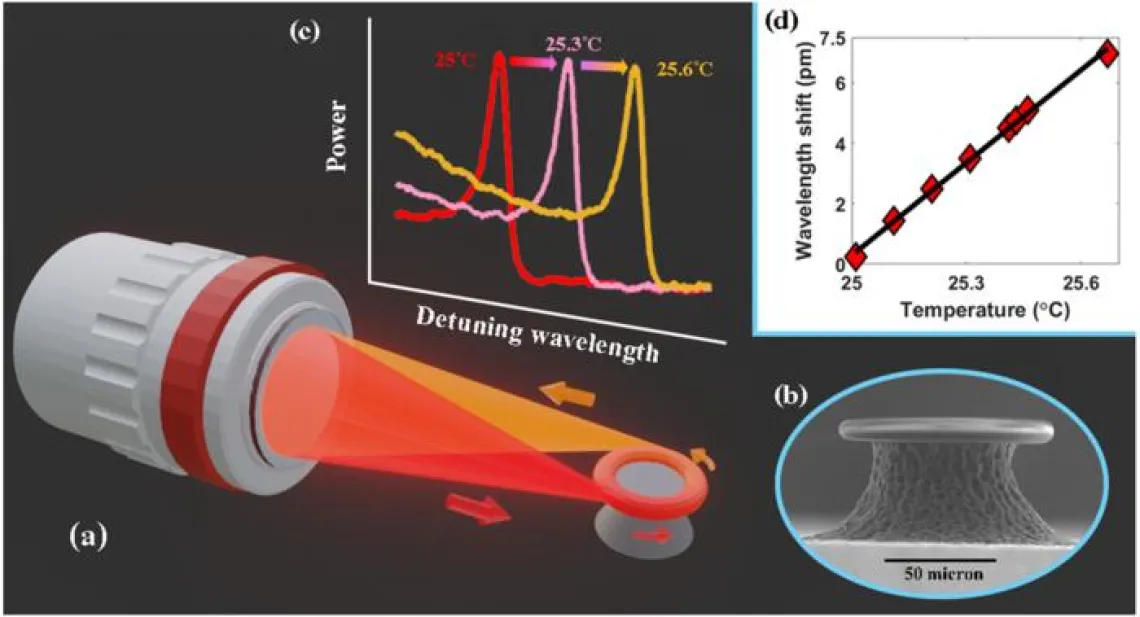Student First-Authored Paper Exploring Biochemical Sensors Capable of Detecting Single Molecules Achieves Top Downloads for the Month in Nature Journal

(a): An objective lens is used to couple free space light (red beam) into the microtoroid. The resonant scatter light is collected at the opposite edge, as indicated by the orange beam. (b): Scanning electron micrograph of a microtoroid resonator (SEM image). (c): Microtoroid resonance wavelength at different temperatures. (d): Resonance wavelength shift vs temperature. A linear fit is shown as a solid black line. Courtesy of Sartanee Suebka, Euan McLeod, and Judith Su.
Sartanee Suebka, Euan McLeod, and Judith Su

A special congratulations to the authors of the paper "Ultra-high-Q free-space coupling to microtoroid resonators" as April's top downloaded paper among all papers published by Light: Science & Applications, a Nature sub-journal with impact factor 19.5, in March 2024. First author of the paper is Sartanee Suebka, PhD Student under the advisement of Judy Su, Associate Professor of Optical Sciences, who is the senior author on the paper. Euan McLeod, Associate Professor of Optical Sciences, is also a co-author on the paper.
